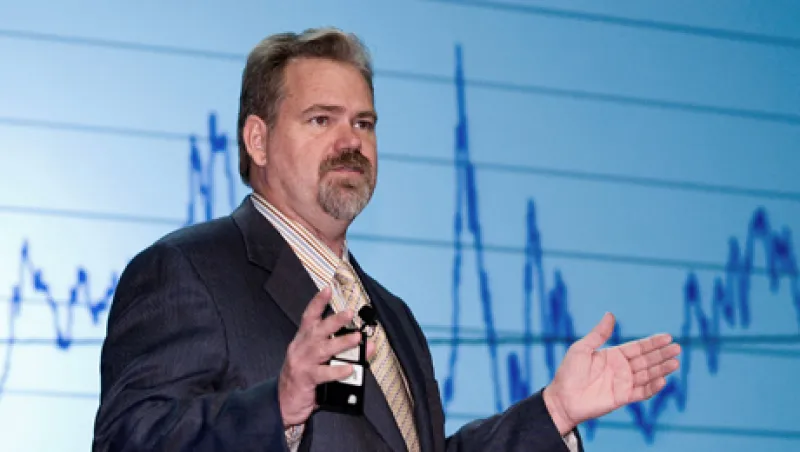Last month fundamental index pioneer, Research Affiliates (RA) of Newport Beach, California, withdrew its patent infringement lawsuit against ETF sponsor WisdomTree Investments of New York City. Robert Arnott, RA’s founder, said that during the legal process, he had become convinced that WisdomTree had developed its series of fundamentally weighted indexes “independently.”
Still, imitation is the sincerest form of flattery. Since 2005, when Arnott and colleagues Jason Hsu and Philip Moore published their “Fundamental Indexation” treatise in the Financial Analysts Journal, the concept of weighting indexes differently, based on “fundamental” measures of company value, like book value or sales, has become more the norm. But do the new fundamentally weighted indexes actually produce superior returns when put into practice?
Some of the largest public pension funds have been among the first adopters for part of their passively managed equity portfolios. That includes CalPERS, the California Public Employees' Retirement System, which had $239.9 billion in its investment portfolios as of early November, and the Oregon Public Employees Retirement Fund (OPERF), which had $55.4 billion in assets under management at year-end 2011. And their portfolio managers say that while the experience is still relatively brief, they’re ready to give the new indexes a thumbs-up.
RA has worked with the FTSE Group of London and with Russell Investments of Seattle on the development of fundamental indexes that have in turn been licensed to pension funds. FTSE, which launched its first fundamental indexes in 2005, now has 27 in its FTSE RAFI (Research Affiliates Fundamental Index) series; while Russell, which launched more recently in February of 2011, has 24 indexes in its Russell Fundamental Index series. CalPERS is a FTSE client, while OPERF is a Russell client.
“It’s only been one year, but the payoff has been pretty good,” says Michael Viteri, the Salem-based senior investment officer for public equities at the Oregon State Treasury, which manages OPERF.
In August of 2011 OPERF announced a commitment of “approximately” $500 million to the Russell Fundamental U.S. Large Company Index. That OPERF mandate, which was implemented on November 1, 2011 with the exact amount of $515,436.547.38, had grown to $598,779,839.84 by October 31 of this year, for a one-year return of 16.26 percent, Viteri says, noting that it beat its benchmark — the Russell 1000 Index — by 1.29 percent. “And the licensing fee is 25 percent of what the cost would have been to have an external manager manage it for us,” he adds.
“The fundamental strategies have been very good,” agrees Dan Bienvenue, the senior portfolio manager, internal equity, at CalPERS in Sacramento.
CalPERS is licensing three of the FTSE RAFI indexes. It started with about $1 billion in a U.S. equities index in 2006, and with the subsequent addition of two other indexes — one, a developed markets ex-U.S. equity index and the other, an emerging-markets equity index — that part of CalPERS’s portfolio is now “north of $5 billion,” he says. The best performer has been the emerging-markets index, which has been “very consistent; very successful,” he says, generating excess positive returns of “more than 200 basis points, and probably 300 or 400 basis points, since inception,” he says. The U.S. equity index has produced about 100 to 200 basis points in excess returns, he says, while the developed markets ex-U.S. index has been “slightly negative since inception,” he says. “We know there are periods when this won’t pay off, and we’ve had some of those periods in some of the regions, but by and large, it’s worked very well,” Bienvenue says, noting that “globally,” the three indexes combined have produced “over 100 basis points” in excess returns.
The indexes used by CalPERS have long and convoluted names because they’ve been customized for CalPERS — for instance, the FTSE CalPERS eRAFI Dev ex US ex Tobacco ex PartyGaming, which translates as developed markets ex-U.S., with no tobacco, gambling or casino stocks. However, the performance data supplied by FTSE with CalPERS approval, shows that the three specialized indexes have been positive year-to-date through mid-November, with the emerging-markets index up 10.3 percent; the U.S. up 9 percent; and the developed markets ex-U.S. up 6.2 percent.
Bienvenue says that he agrees with Research Affiliates’ basic premise, that weightings based on market capitalization produce indexes that are biased towards overpriced stocks. “That’s an inherent drag on performance,” he says, noting that the fundamental indexes “inherently provide a value bias over long periods of time,” and “we’re comfortable having that sort of long-term value bias.”
So, too, is the Danish Teachers' Pension Fund, or Lærernes, which put $150 million, or €120 million, into a mandate that tracks the Russell Fundamental Emerging Markets Large Company Index last April. That investment represents about 1.7 percent of the plan’s total assets and about 7.3 percent of its equity portfolio, says portfolio manager, Morton Roed Eriksen.
“We needed a new emerging-markets manager, and in that process, we looked into these smart beta approaches, as they’re called,” he says. “We liked the value bias that comes out of this mandate,” he says. Since the mandate is still less than a year old, the plan has yet to publish its results, but so far, “our passive replication” of the index “is in line with the benchmark,” he says. Russell’s web site shows that the index had a year-to-date return of 11 percent through October 31.
RA constructs its indexes based on four factors: cash flow, sales, dividends and book value, says Michael Larsen, Research Affiliates’ director and head of affiliate relations.
RA takes five years of history on the first three and calculates averages, and then it adds current book value to create a universe of stocks where the four factors are weighted equally, he explains. “An importance nuance,” he says, is that RA isn’t reweighting existing indexes like the Russell 1000 but building its own from scratch by calculating a fundamental weight for every publicly available stock in a given universe, like U.S. stocks, “all the way down to the tiniest of tiny securities,” he says. Then FTSE or Russell decide how many stocks they want to use in an index on a particular sector, based on their fundamental weightings, he says. The significance, he says, is that this approach “completely eliminates” the link to market price.
Both Russell and FTSE recalculate their target weights annually, but move towards their new weights a bit at a time, “on a quarterly basis throughout the year,” he says, with 25 percent of the shares rebalancing every quarter, to “reduce the market impact,” he says.






